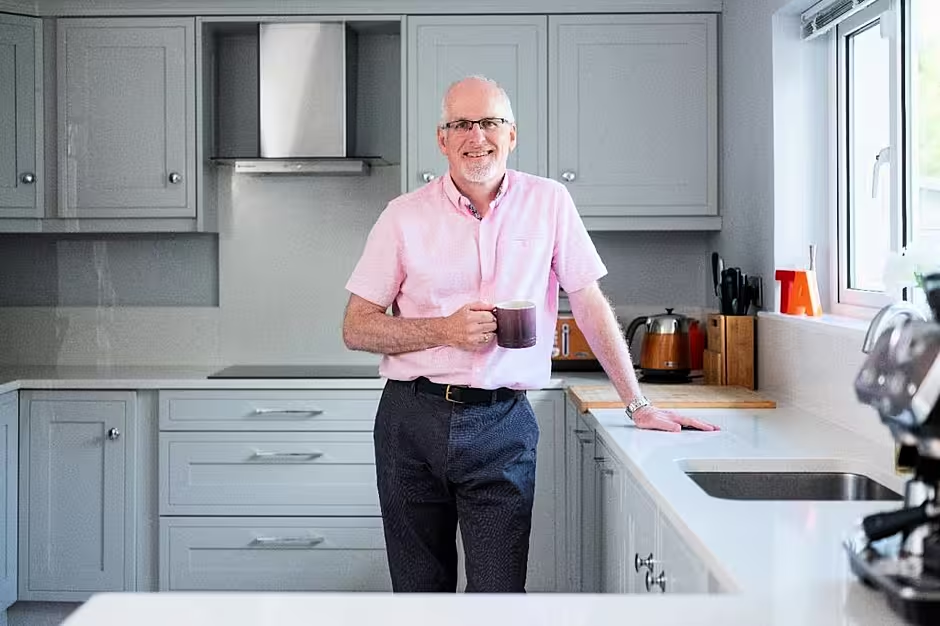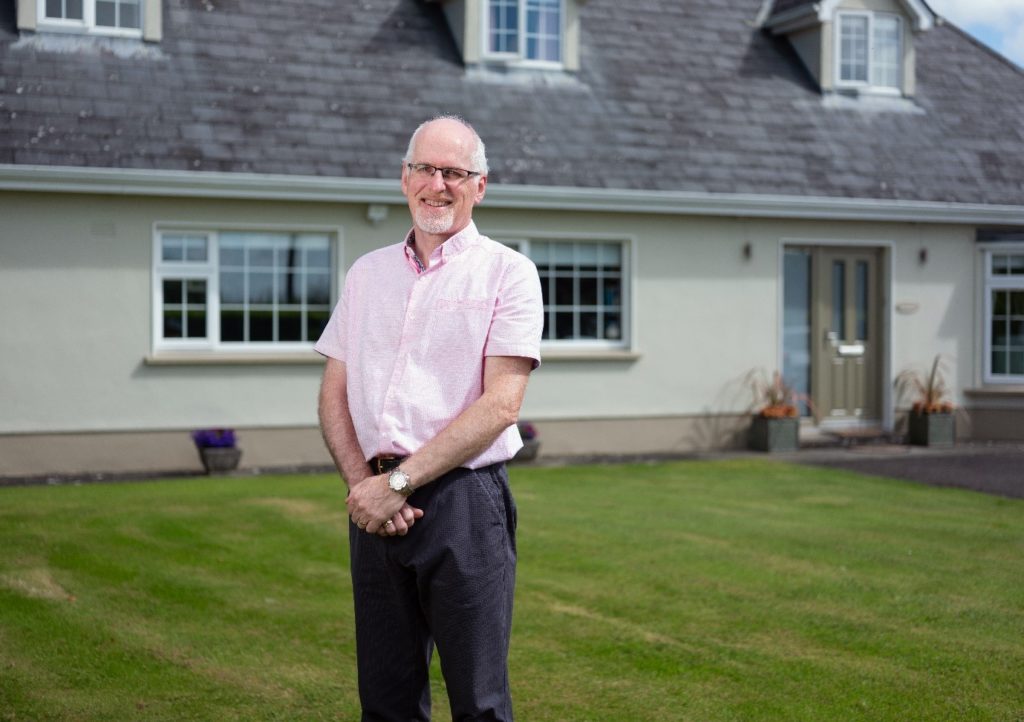More than 100,000 homeowners in Ireland already have installed a heat pump. Avoid quick fix solutions, that you may ultimately regret, by doing your own research on a replacement heating system that is convenient to operate, far more efficient, and generates less pollution
Is your old boiler on its last legs? Now is the perfect time to start planning for the clean switch to a heat pump, which will provide your home with a more constant and efficient source of warmth.
The Sustainable Energy Authority Ireland (SEAI) is encouraging all homeowners with old oil or gas boilers to show fossil fuels the door and make the switch to a cleaner, more reliable and energy efficient heat pump system.
Upgrading your insulation and switching to a heat pump will result in a cleaner, cosier home. What’s more, there are Government funded SEAI Home Energy Upgrade grants to help, including one for up to €10,500 through SEAI’s One Stop Shop service for the installation of a heat pump.
Heat pumps are a cleaner alternative to oil or gas boilers. Powered by electricity, which is increasingly renewably sourced, heat pumps offer one of the most environmentally friendly heating systems to Irish households.

Long the go-to solution across Scandinavia, it is a tried and tested technology perfect for the Irish climate and suited to both new and older homes that are already well insulated.
More than 100,000 homeowners here already have a heat pump and are enjoying the benefits of increased home comfort. In fact, heat pumps are now installed as standard in most new build homes.
There are more than 400,000 existing homes which are already sufficiently insulated to allow a heat pump to operate efficiently. However, many homeowners are waiting for their existing oil or gas boiler to break down before making the switch.
But waiting until that moment is a mistake, says Tom Halpin, who, recently replaced his oil-fired boiler.
Making the change
In July, after a few telltale signs of deterioration, the SEAI’s head of communications, finally replaced his old oil-fired boiler with a heat pump.
That it took him until now might surprise readers, given where he works. But while SEAI staffers know more than most about the benefits of heat pump technology, “We are after all just ordinary homeowners with the same challenges, competing priorities and books to balance,” he explains.
Married with two adult children, Tom lives in a dormer bungalow, built in 1995, in Meath, which he and his wife bought 20 years ago. At that time heat pumps were almost unheard of in Ireland. The house was not on a gas network, so the couple installed an oil boiler.
It worked well for a good number of years, but more recent service calls suggested it might be coming to the end of its life. Rather than wait for the inevitable, earlier this year he started to plan ahead.
Plan early to plan well
“From my experience, the best advice I can offer is that if you’re thinking of changing over to a heat pump, do your research early, before your current boiler breaks down for good because, if that happens, you will most likely go for the quickest fix and not necessarily the best option,” says Tom.
Bad enough that a new boiler is always a so-called grudge purchase but, he points out, “an oil boiler will lock you into a worsening predicament, whereas with a heat pump you are locked into an improving one.”
That will be it for another 10 or 15 years, chaining you to a polluting technology that, with volatile fossil fuel prices and rising carbon taxes, will likely cost you more and more over its lifespan.

Tom’s experience
Tom actually started his heat pump journey a couple of years ago, when he topped up the insulation in his cavity walls, grant-aided by SEAI.
His home didn’t have a BER when he bought it. So, he was pleasantly surprised to receive a post-insulation BER of C1, because it meant that, with just a couple of small additional upgrades, his home would be sufficiently insulated and airtight for a heat pump to work efficiently. He invested in two new high performance exterior doors and an insert stove in the property’s one remaining open flue.
“We now had a heat pump-ready home,” he explains.
Thanks to his day job, he understood the multiple benefits of heat pumps including greater comfort, lower emissions, constant hot water, and no need to think about oil tank levels or refills. “And we’d never have to worry about the immersion switch ever again,” he says.
One common misconception is that heat pumps only work with underfloor heating. This is not the case, and so the radiator system in Tom’s home was perfectly suited to his chosen heat pump.
Tom was a little concerned about how disruptive the works would be, and whether he would need to replace some of his radiators, he admits.
The work was done in two days, during which he was able to continue working from home, and only one radiator needed changing, to suit the size of his home office, for comfort.
The biggest change required was a bigger cylinder in the hot press for the new device. His supplier ran the new water pipes required down through the attic, which again minimised disruption.
You need to plan ahead, he says. Tom had to talk to different suppliers, have an in-person survey of the house conducted, followed by a technical assessment, the latter is necessary to avail of the SEAI heat pump grant. These experts are all appointed through your supplier.
Such planning is no different from putting in a new kitchen or installing double glazing, he points out.
Benefits abound
Post work what impresses him most is the smart heating system that divides the house into zones, all individually controllable. As the couple are freshly minted empty nesters, they can tailor the heat as they need it.
There is comfort too in knowing the solution he has “is designed specifically for my house,” he adds.
“Rather than just getting a replacement boiler, we got a replacement heat system which is far more intelligent, convenient to operate and, ultimately far more efficient and generates far less pollution.”
It’s also umpteen times more comfortable. His old system, which was set to come on mornings and evenings, was the subject of constant consideration.
“It was always, should we turn it back on for another hour? With a heat pump you effectively keep the house at a steady, comfortable temperature all the time,” he explains.
That’s particularly attractive given that he works from home a lot. Like many of us, he has “tried to survive without putting the heat on during the day”, he says.
“That’s familiar for stay-at-home parents with children too, who are used to trying to get away with a little less heat than they would like. With a heat pump you don’t have to go without. It’s a comfortable living environment 24/7.”
Accounting for improvement
When doing his sums Tom also considered the fact that he would soon have to pay for a replacement boiler regardless. As a heat pump can cost upwards of €15,000, the fact that he could secure an Individual Energy Upgrade grant from SEAI of €6,500 for a heat pump was a big consideration too. He also received a €200 grant towards the cost of the technical assessment.
To pay the balance, he secured a green, low-interest, credit union loan. Though any such outlay is significant, the fact that he knew he would be “boosting the value of our home, through having a better Ber,” helped with the decision-making process, he says.
“The investment in insulation and a more energy efficient heat pump system will greatly reduce our energy use and save on the monthly energy bills,” he says. “And no more oil refills!”
Visit SEAI today to find out more about the benefits of heat pumps and how they work, hear from homeowners, like Tom, who have already made the switch, and learn about Government funded SEAI grants and registered installers, to support your heat pump journey











